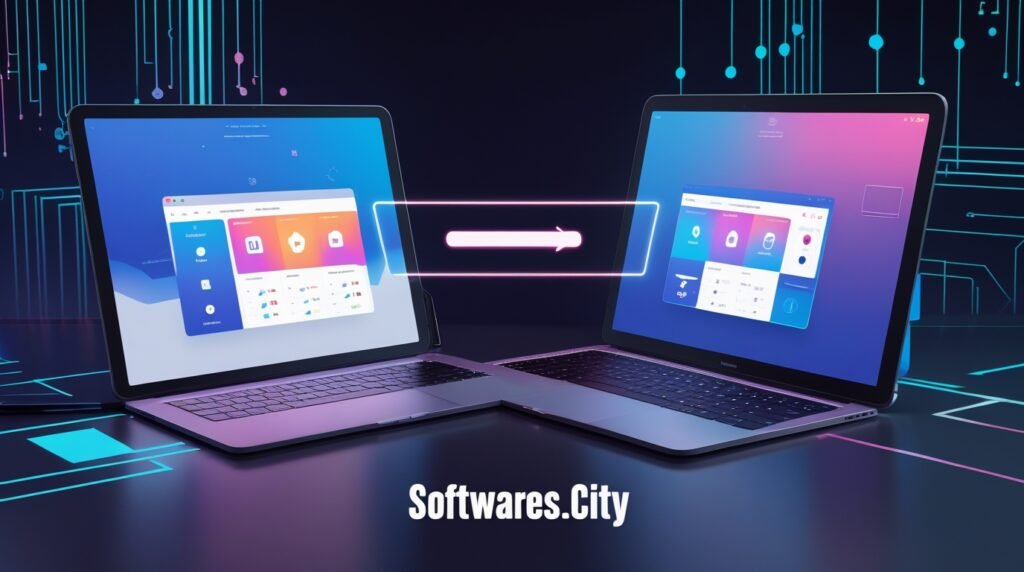The Ultimate Guide to Downloading Free Software Without Viruses
Navigating the Digital Landscape Safely
In the modern computing era, free software provides incredible power and functionality at no monetary cost. However, this valuable resource is often surrounded by a minefield of malicious software, misleading advertisements, and outright scams. The pursuit of a simple application can inadvertently lead to a compromised computer, stolen personal data, and immense frustration. Understanding how to safely navigate this digital landscape is no longer a niche skill but a fundamental necessity for every PC user. This guide provides a comprehensive strategy to help you identify trustworthy sources, recognize common pitfalls, and confidently download the tools you need without sacrificing your system’s security or your personal privacy.
Identifying Reputable Software Sources
The first and most crucial line of defense is knowing where to look. Your primary destinations should always be the official developer’s website or established, curated software repositories. Websites like the official Microsoft Store, SourceForge, and FossHub have rigorous standards and scanning processes to minimize risks. When you identify a program you want, always make a concerted effort to find its official homepage. A direct search for the software’s name followed by “official website” can often yield the correct result. These official sites provide the most authentic, unaltered versions of the software, straight from the creators. Avoiding third-party download portals is the single most effective way to reduce your exposure to bundled adware and viruses.
Deciphering the Dangers of Bundled Crapware
Even when downloading from a seemingly legitimate source, a significant threat comes in the form of bundled software, often called “crapware” or “potentially unwanted programs” (PUPs). These are additional toolbars, system optimizers, or other applications that are packaged with the main software you intend to install. During the installation process, these bundles are often presented in a pre-checked state, relying on users to click “Next” quickly without reading. To avoid this, you must adopt a habit of slow, deliberate installation. Always choose the “Custom” or “Advanced” installation option instead of “Express.” This reveals all the hidden offers and allows you to meticulously uncheck every box for additional software you did not request.
The Critical Role of Your Antivirus and Firewall
Before you even begin your download journey, ensure your primary security tools are active and updated. A robust, reputable antivirus suite and an enabled firewall are non-negotiable. These programs act as a critical safety net. Modern antivirus solutions can often detect malicious installers and suspicious files before they can execute and cause harm. They can also block connections to known malicious websites. Keep your security software’s virus definitions current, as new threats emerge daily. Furthermore, consider enabling the built-in security features of your operating system, such as Windows Security, which provides real-time protection against a wide array of threats. This layered defense strategy is essential for catching anything that might slip past your initial vigilance.
A Universe of free software for PC
The world of free software for PC is vast and diverse, offering powerful alternatives to expensive commercial products. From the comprehensive office suite LibreOffice to the media player VLC, which can play virtually any video file, these tools are developed by dedicated communities and individuals. For graphic design, GIMP provides a feature-rich experience rivaling paid competitors, while DaVinci Resolve offers professional-grade video editing at no cost. Security tools like Malwarebytes and Avast Free Antivirus protect your system, and communication platforms like Discord and Zoom keep you connected. This ecosystem thrives on open-source principles and freemium models, ensuring that high-quality software remains accessible to everyone.
Scrutinizing File Details and Digital Signatures
When you locate a download link, do not click it immediately. Practice due diligence by hovering your mouse over the link to reveal the true destination URL in your browser’s status bar. Look for suspicious domain names or misspellings. Once the file is downloaded, right-click on the installer and select “Properties.” Here, you can find valuable information. Look for a “Digital Signature” tab. A valid digital signature from the verified publisher is a strong indicator that the file is genuine and has not been tampered with since it left the developer. If the digital signature is missing or shows as invalid, treat the file with extreme suspicion and consider deleting it immediately.
Harnessing the Power of User Reviews and Community Feedback
Never underestimate the collective intelligence of the user community. Before committing to a download, take a moment to research the software. Read the descriptions and user reviews on the download page. Look for consistent complaints about malware, adware, or poor performance. Expand your search to independent tech forums and trusted review websites. If a significant number of users report a program being bundled with viruses, it is a major red flag. Conversely, software with a long history, positive feedback, and an active support community is generally a safer bet. This research phase adds only a few minutes to your process but can save you from hours of troubleshooting and system cleaning.
Maintaining a Clean and Secure System
Your responsibility does not end once the software is successfully installed. Maintaining a clean system is an ongoing process. Regularly review the programs installed on your computer through the “Add or Remove Programs” utility in Windows. Uninstall any applications you no longer use or do not recognize. Keep your operating system and all your software, especially your web browser and security tools, updated with the latest patches. These updates frequently contain critical security fixes that protect against newly discovered vulnerabilities. By practicing good digital hygiene, you not only protect your current system but also create a more resilient environment for all your future software downloads.
Conclusion: Empowerment Through Vigilance
Downloading free software without viruses is entirely achievable with a methodical and cautious approach. The key lies in shifting from a passive to an active downloader. By prioritizing official sources, reading every installation screen carefully, leveraging security tools, and consulting community wisdom, you empower yourself to take full advantage of the rich ecosystem of free PC software. This vigilance ensures that your computer remains a tool of productivity and creativity, not a victim of malicious intent. Let this guide serve as your foundation for a safer, more secure digital experience.







